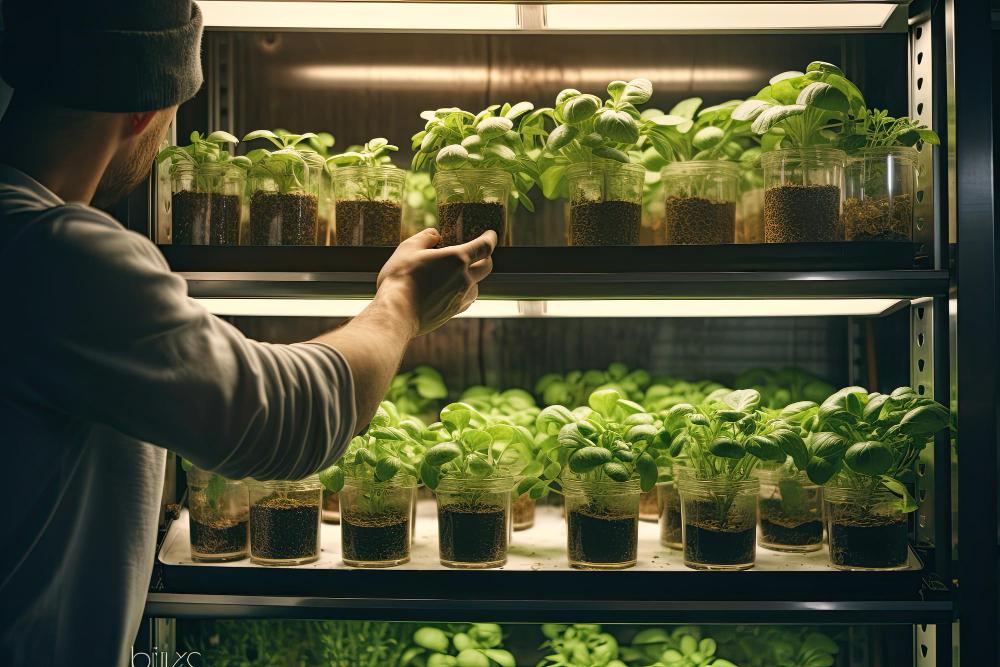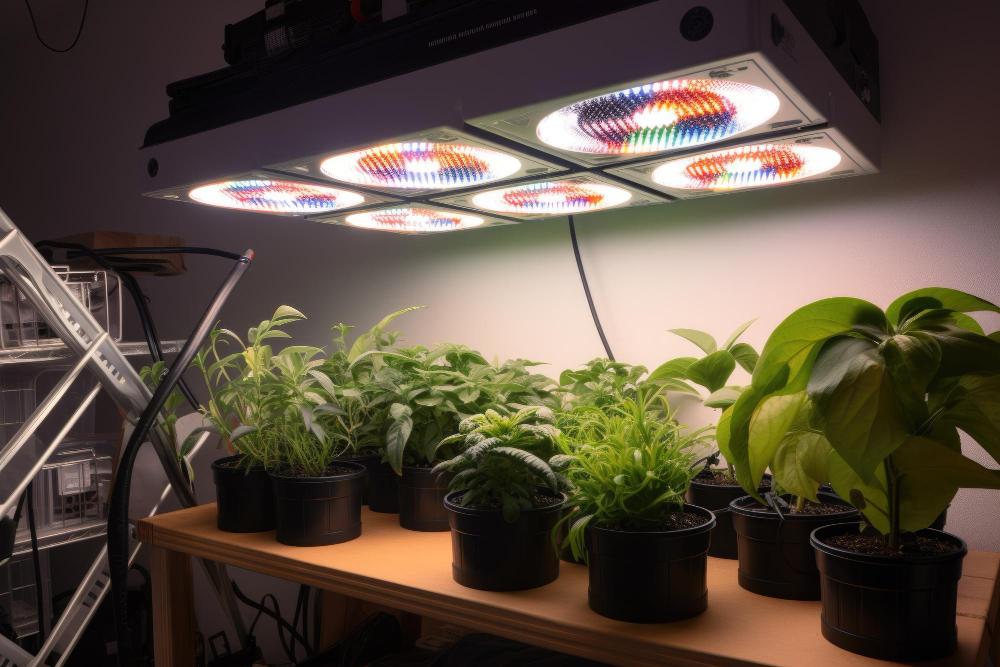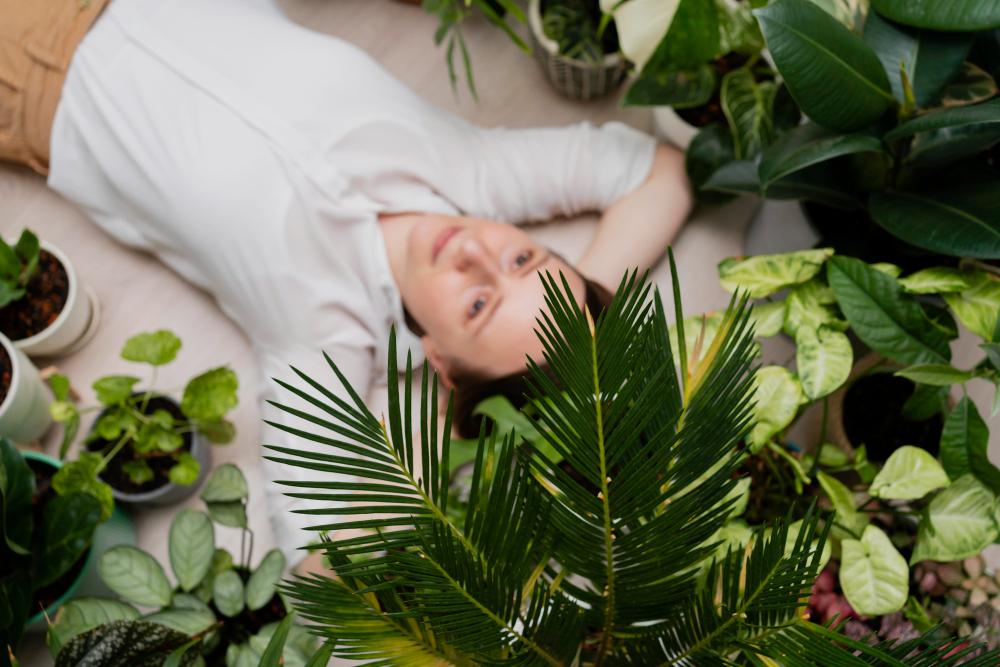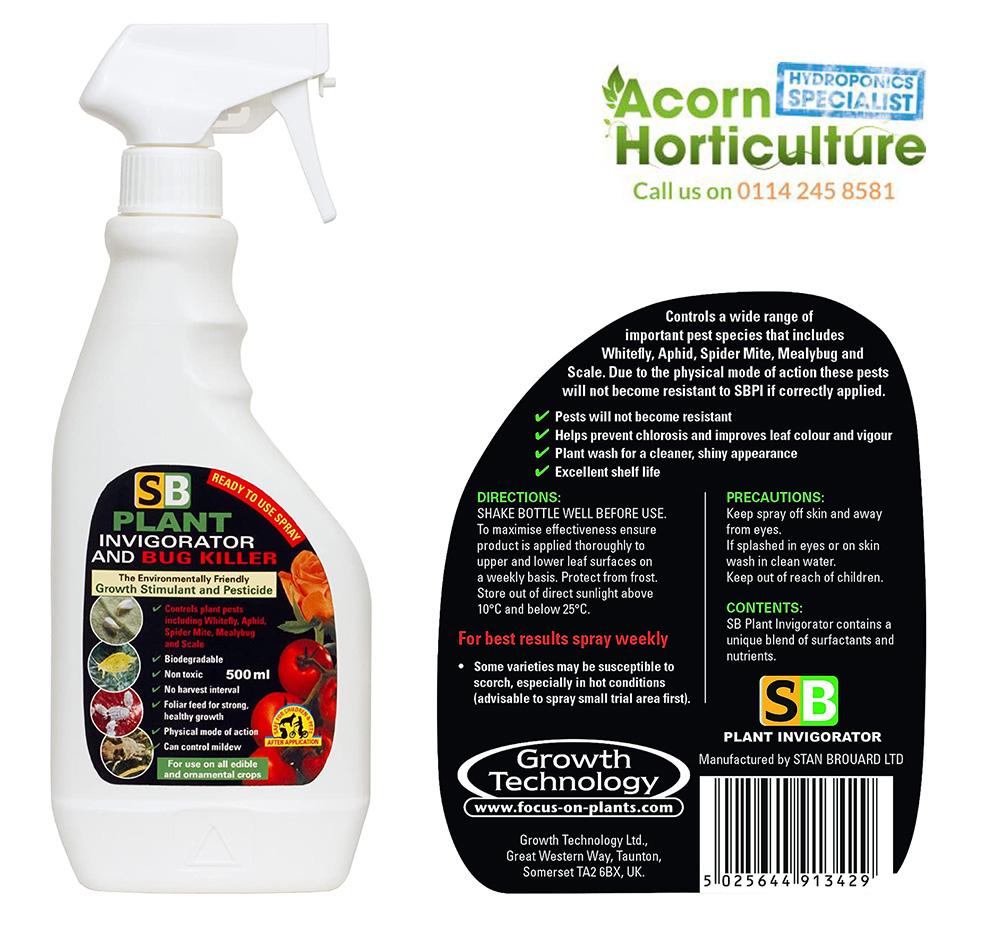Introduction
At Acorn Horticulture, we believe that indoor gardening is an art form in itself. Bringing nature indoors and nurturing plants to optimal growth and health requires skill, patience, and dedication. One of the key aspects of successful indoor gardening is pruning and training plants.
Indoor grow systems come in various forms, including hydroponic setups, vertical farms, and artificial lighting for plants. Regardless of the system, pruning and training plants can significantly improve plant growth, yield, and overall health. By selectively removing certain branches and leaves, pruning can stimulate the growth of new shoots and buds, improve airflow, and increase light penetration. Meanwhile, training involves manipulating the plant’s growth pattern to ensure a balanced structure and optimal light absorption.
Key Takeaways:
- Pruning and training plants are essential for optimising indoor plant growth and health.
- Indoor grow systems can benefit from pruning and training techniques, regardless of the system used.
- Pruning can stimulate new growth, improve airflow, and increase light penetration.
- Training can manipulate the plant’s growth pattern for a balanced structure and optimal light absorption.
Understanding Indoor Grow Systems
At Acorn Horticulture, we pride ourselves on our expertise in indoor gardening. Indoor grow systems are a fantastic way to cultivate plants all year round, without the need for outdoor space or traditional soil-based methods. In this section, we will provide an overview of indoor grow systems, including hydroponic gardening, vertical farming, and artificial lighting for plants.
Hydroponic Gardening
Hydroponic gardening is a soilless method of growing plants where the roots are suspended in a nutrient-rich solution. This method is highly efficient as it allows for precise control of nutrient levels and pH, resulting in faster growth and higher yields. Hydroponic systems can range from basic setups using containers and hand-watering, to more advanced setups involving automated pumps and timers.
Vertical Farming
Vertical farming is a cutting-edge method of indoor plant cultivation that utilises vertical space by stacking layers of plants. This allows for high-density planting and efficient use of space. Vertical farms can be set up in a variety of ways, such as shelves, racks, or towers, and can be either hydroponic or soil-based.
Artificial Lighting
Artificial lighting is essential for indoor grow systems, as it provides the necessary light spectrum for plant growth and development. LED grow lights are the most energy-efficient lighting option, and can be customised to provide the exact wavelengths needed by plants at different stages of growth.
Indoor grow systems offer many advantages, including year-round production, customisable growing conditions, and the ability to grow a wide variety of plants. Whether you are a seasoned gardener or a beginner, indoor grow systems are a great way to cultivate your green thumb. At Acorn Horticulture, we offer a range of products and resources to help you get started with indoor gardening in the UK.
The Benefits of Pruning Plants
Pruning is a vital technique for promoting healthier and more productive plants in indoor grow systems. By removing dead or damaged foliage, you can improve airflow and prevent the spread of disease. Pruning also helps to direct energy towards growing healthy leaves and producing more flowers or fruit.
But pruning is not just about removing unwanted leaves or branches – it’s also about shaping the plant to achieve the desired growth pattern. By strategically cutting back certain stems or branches, you can encourage the plant to grow in a more compact shape, which can be particularly useful in indoor grow systems where space can be limited. Pruning can also help to control the overall size of the plant.
| Benefits of Pruning Plants in Indoor Grow Systems |
|---|
| Improves airflow and reduces the risk of disease |
| Directs energy towards healthy growth and fruit/flower production |
| Encourages plants to grow in a more compact shape |
| Controls the overall size of the plant |
When pruning plants in indoor grow systems, it’s important to keep in mind the different requirements of various plant species. Some plants, such as tomatoes or peppers, require regular pruning to maximise their yield and maintain the desired shape. Other plants, such as herbs or leafy greens, may require less frequent pruning, but can still benefit from occasional shaping to promote healthier growth.
Overall, proper pruning techniques can help to optimise plant growth and yield, as well as promote overall plant health and longevity. We recommend consulting with a horticultural expert or referring to reliable plant care resources to determine the best pruning practices for your specific indoor grow system and plant species.
Techniques for Pruning Plants
Now that we’ve explored the benefits of pruning plants in indoor grow systems, let’s take a closer look at some specific pruning techniques.
Topping: This technique involves removing the top of the main stem to encourage the growth of lateral branches. To top a plant, use sterilised pruning shears to cut off the top of the stem above the second or third set of leaves. This will encourage the plant to grow bushier and more compact, improving overall yield.
| Tools needed: | Steps: |
|---|---|
| Pruning shears | 1. Identify the top of the main stem |
| Sterilising solution (e.g. rubbing alcohol) | 2. Cut off the top of the stem above the second or third set of leaves |
| Clean towel or rag | 3. Dispose of the top of the stem properly |
Pinching: This technique involves removing the tip of a stem (or branches) with your fingers to promote bushier growth. Pinching can be done throughout the vegetative stage of the plant’s life cycle. Use your fingers to gently pinch off the top of the stem above the second or third set of leaves, being careful not to damage the leaves.
Thinning: This technique involves removing excess growth, such as dead or yellowing leaves and large fan leaves, to improve airflow and light penetration. Use sterilised scissors to carefully cut off the unwanted growth. Thinning can also help to redirect energy to other parts of the plant, improving overall yield.
| Tips for Pruning: |
|---|
| Always use sterilised tools to prevent the spread of diseases |
| Prune during the vegetative stage of the plant’s life cycle for best results |
| Be careful not to over-prune – the plant needs enough foliage to produce energy through photosynthesis |
Conclusion:
Using pruning techniques such as topping, pinching, and thinning can improve overall plant health and yield in indoor grow systems. Remember to use sterilised tools, prune during the vegetative stage, and be mindful not to over-prune. Stay tuned for our next section, where we will explore the benefits of training plants in indoor grow systems.
The Importance of Training Plants
Training plants is a crucial technique that helps manage plant size, optimise light absorption and improve overall plant structure. At Acorn Horticulture, we believe that training your plants can significantly increase your yield and maximise the efficiency of your indoor grow system.
By training your plants, you can control their growth and shape, ensuring they utilise all available light and nutrients effectively. This also allows you to create a more even canopy, which helps maximise yield and prevents overcrowding that can lead to mold and other issues.
There are various training methods such as tying, bending, and trellising, and each technique has its benefits depending on the plant’s growth pattern and your goals as a grower. We recommend that you explore and experiment with different training techniques to find the best one that works for you.
At Acorn Horticulture, we have a wide range of products and resources to help you with training your plants and optimising your indoor grow system. Whether you’re a beginner or an experienced grower, our knowledgeable team can assist you in achieving the best results.
Techniques for Training Plants
Training plants in indoor grow systems is vital for optimising growth, yield, and overall plant health. Here are some techniques for training plants:
Low-Stress Training (LST)
LST involves bending the plant’s stems and tying them down to encourage horizontal growth. This technique increases the plant’s exposure to light and promotes even canopy development. To perform LST, gently bend the stem and secure it with a soft wire or string.
Screen of Green (SCROG)
SCROG involves placing a screen above the plants to guide them to grow horizontally. This method helps create an even canopy, maximises light exposure and promotes bud production. To perform SCROG, set up a screen above the plants, and tie down the branches that grow through it.
Sea of Green (SOG)
SOG involves growing many small plants instead of a few larger ones. This technique promotes faster flowering, maximises space, and increases yield. To perform SOG, plant many small plants close together and ensure they receive adequate light.
These techniques can be used individually or in combination to achieve the desired results. It is essential to monitor and adjust the training methods throughout the plant’s growth cycle to ensure optimal results.
The Importance of Maximising Growth and Yield in Indoor Grow Systems
While pruning and training plants are essential techniques for optimising growth and yield in indoor grow systems, there are several other factors to consider. Proper nutrition, temperature and humidity control, pest management, and the use of grow lights can all contribute to a healthy and bountiful indoor harvest.
Firstly, providing your plants with the right nutrients is crucial for their growth and development. This can be achieved through a variety of nutrient solutions, including general-purpose hydroponic solutions or organic fertilizers. It is important to monitor the pH balance of your solution regularly to ensure optimal nutrient uptake.
Secondly, controlling the temperature and humidity levels in your grow space is essential. Most plants grow best in temperatures between 18-26°C, and humidity levels between 40-60%. Ventilation systems, fans, and dehumidifiers can help regulate these levels and prevent the buildup of harmful moisture and pests.
Thirdly, pest management is a key component of indoor gardening. Pests such as spider mites, aphids, and whiteflies can quickly wreak havoc on your indoor garden. Using natural pest control methods such as neem oil or introducing beneficial insects like ladybugs can help prevent and manage infestations.
Finally, the use of grow lights is essential for indoor plant growth. LED grow lights are a popular choice for indoor gardening as they produce high-quality light while consuming less energy. Investing in a quality grow light can make all the difference in maximizing growth and yield in your indoor grow system.
Setting Up a Hydroponic Indoor Grow System
Hydroponics is a highly efficient method of indoor plant cultivation that involves growing plants without soil. Instead, plants are grown in a nutrient-rich solution that is fed directly to their roots. This method provides many benefits, including faster growth rates, higher yields, and greater control over plant nutrition.
Here are the steps involved in setting up a hydroponic indoor grow system:
- Choose your hydroponic system: There are many different hydroponic systems to choose from, including drip systems, nutrient film technique (NFT), wick systems, and more. Choose the system that best suits your needs and budget.
- Set up your grow space: You will need a dedicated space to set up your hydroponic system. Choose a location that has access to electricity, ventilation, and a water source.
- Install your hydroponic system: Follow the manufacturer’s instructions to install your hydroponic system. This will typically involve setting up containers for your nutrient solution, laying out tubing, and installing a grow light if necessary.
- Prepare your nutrient solution: Mix your nutrient solution according to the manufacturer’s instructions, making sure to balance the pH levels as necessary.
- Seed your plants: Choose the plants you want to grow and seed them according to the instructions on the packet.
- Monitor your plants: Keep an eye on your plants’ growth and adjust the nutrient solution and lighting as necessary.
- Harvest your plants: Once your plants are fully grown, harvest them and prepare them for consumption or storage.
Remember to keep your hydroponic system well-maintained, regularly checking the pH levels and nutrient solution to ensure your plants are getting the right amount of nutrients. With proper care and attention, your hydroponic indoor grow system can provide you with a steady supply of fresh, healthy produce all year round.
The Future of Indoor Agriculture
At Acorn Horticulture, we believe that indoor agriculture has a bright future ahead. With the advancements in technology and the increasing demand for sustainable food production, indoor agriculture has the potential to revolutionize the way we grow and consume our food.
Vertical farming, a method of growing crops in vertically stacked layers, is gaining popularity as it allows for high-density production in urban areas, reducing transportation costs and carbon emissions. Additionally, indoor agriculture allows for year-round production, independent of weather conditions, providing a stable supply of fresh produce.
We are constantly exploring new ways to improve and innovate indoor gardening techniques, from optimizing lighting to developing efficient hydroponic systems. By integrating technology and sustainable practices, we aim to provide accessible and eco-friendly solutions for indoor agriculture in the UK and beyond.
The Conclusion: The Art of Pruning and Training Plants in Indoor Grow Systems
We hope this article has provided valuable insights into the art of pruning and training plants in indoor grow systems. Both techniques play a significant role in optimizing plant growth, yield, and overall health. Pruning helps to improve airflow, promotes stronger growth, and increases overall yield. Meanwhile, training plants can help manage plant size, optimize light absorption, and improve overall plant structure.
At Acorn Horticulture, we understand the importance of proper plant care for successful indoor gardening. That’s why we offer a wide range of hydroponics and indoor gardening equipment, nutrient solutions, and expert advice.
The Way Forward
As indoor agriculture continues to grow and evolve, we anticipate the development of new technologies and sustainable methods. Vertical farming, for instance, offers a promising way to produce food in urban settings while reducing the carbon footprint. At Acorn Horticulture, we are committed to staying up-to-date with the latest trends and innovations in indoor gardening, so that we can continue to provide our customers with the best products and services.
Thank you for reading, we hope you found this article helpful. If you have any questions or would like to learn more about indoor gardening, please don’t hesitate to contact us.
FAQ
Q: What is the importance of pruning and training plants in indoor grow systems?
A: Pruning and training plants in indoor grow systems can optimize growth, yield, and overall plant health. These techniques improve airflow, promote stronger growth, and increase overall yield.
Q: How do indoor grow systems work?
A: Indoor grow systems, including hydroponic gardening, vertical farming, and artificial lighting for plants, provide controlled environments for plant cultivation. These systems offer advantages such as efficient space utilization and year-round plant growth.
Q: What are the benefits of pruning plants?
A: Pruning plants in indoor grow systems improves airflow, promotes stronger growth, and increases overall yield. It also helps maintain plant shape and control size.
Q: What techniques can be used for pruning plants in indoor grow systems?
A: Techniques for pruning plants in indoor grow systems include topping, pinching, and thinning. It is important to sterilize pruning tools to prevent the spread of diseases.
Q: Why is training plants important in indoor grow systems?
A: Training plants in indoor grow systems helps manage plant size, optimize light absorption, and improve overall plant structure. Different training methods such as tying, bending, and trellising can be used.
Q: What techniques can be used for training plants in indoor grow systems?
A: Techniques for training plants in indoor grow systems include low-stress training (LST), screen of green (SCROG), and sea of green (SOG). Each technique has its benefits and specific steps involved.
Q: What factors contribute to maximizing growth and yield in indoor grow systems?
A: Proper nutrition, temperature and humidity control, pest management, and the use of suitable grow lights are factors that contribute to maximizing growth and yield in indoor grow systems.
Q: How do I set up a hydroponic indoor grow system?
A: Setting up a hydroponic indoor grow system involves steps such as acquiring the necessary equipment, preparing nutrient solutions, maintaining pH balance, and proper system maintenance. Hydroponics offers numerous benefits for indoor plant cultivation.
Q: What is the future of indoor agriculture?
A: The future of indoor agriculture holds advancements in technology, potential for vertical farming, and sustainable food production. Indoor agriculture also offers environmental benefits in terms of reduced water usage and pesticide application.
Q: What are the key points to remember about indoor grow systems?
A: Pruning and training plants in indoor grow systems are important for optimizing growth, yield, and overall plant health. For more information and resources on indoor gardening in the UK, explore Acorn Horticulture.















